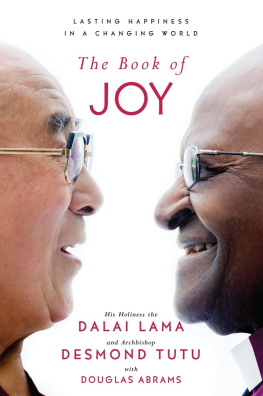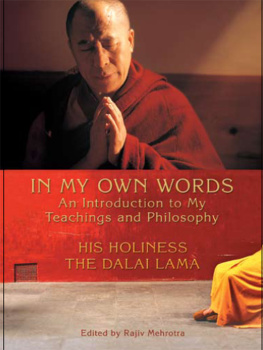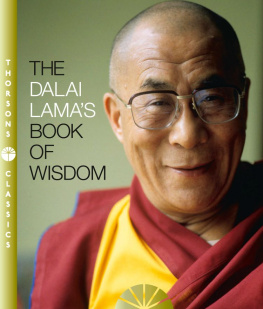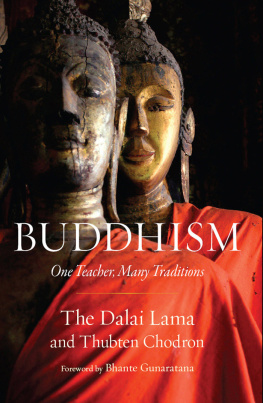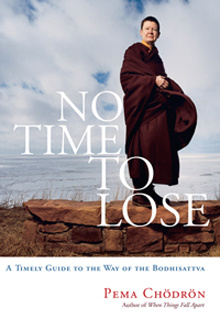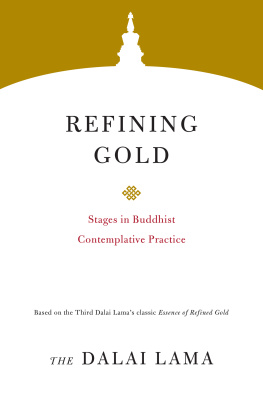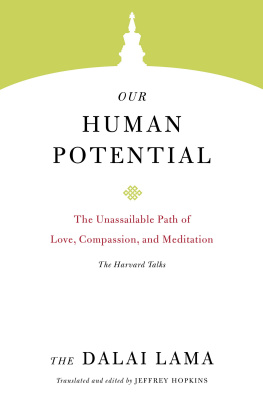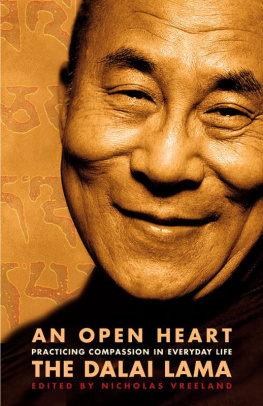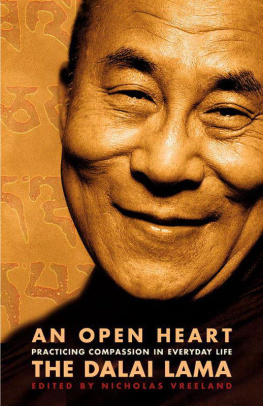
THE GOOD HEART


This landmark of interfaith dialogue will inspire readers of all faiths.

Arguably the best book on interreligious dialogue published to date. One does not say such things lightly, but in a very real sense this is a holy book.
Huston Smith, author of The Worlds Religions
IN THE GOOD HEART, THE DALAI LAMA PROVIDES an extraordinary Buddhist perspective on the teachings of Jesus. His Holiness comments on well-known passages from the four Christian Gospels, including the Sermon on the Mount, the parable of the mustard seed, the Resurrection, and others. Drawing parallels between Jesus and the Buddha and the rich traditions from which they hail the Dalai Lama delivers a profound affirmation of the sacred in all religions. Readers will be uplifted by the exploration of each traditions endless merits and the common humanity they share.
To hear the Dalai Lama reflecting on the Gospels is exciting, refreshing, and illumining, reminding those of us who are Christians that this is a living Word.
Diana L. Eck, Harvard University
THE DALAI LAMA is the spiritual leader of the Tibetan people and winner of the Nobel Peace Prize. A beacon of inspiration for both Buddhists and non-Buddhists, he has persistently reached out across religious lines and to political leaders and scientists in dialogues advancing peace and understanding.
Table of Contents
Guide
CONTENTS
Matthew 5:3848
Matthew 5:110
Mark 3:3135
Mark 4:2634
Luke 9:2836
Luke 9:16
John 12:4450
JOHN 20:1018
A NOTE TO THE READER
T HIS BOOK EXPLORES the Gospels with the Dalai Lama and the participants of the 1994 John Main Seminar. In addition to capturing the proceedings of the Seminar, this book has been augmented with additional contextual material on the Christian and Buddhist traditions to enhance its use as a tool for future interreligious dialogues.
The main body of The Good Heart is organized around individual passages from the Gospel upon which the Dalai Lama is commenting. Each chapter begins with His Holinesss reading of and comments on a particular Gospel passage. The Gospel passages used in The Good Heart are based on the New English Bible (University of Oxford Press, 1970), which was John Mains preferred version.
Robert Kielys preface evokes the mood and atmosphere of the Seminar itself. Laurence Freemans introduction provides an overview of interreligious dialogue in general, and Christian-Buddhist dialogue in particular.
Occasionally in the body of the text, a narrators voice briefly appears to set the scene. This is Robert Kiely, highlighting some of the experiences of the Seminar as they occurred. These narrative interludes are set apart in italic type in order to help the reader distinguish them from the actual dialogue. The end of some chapters include the Seminar discussion periods, during which panelists shared insights and queries with the Dalai Lama. In these sections, the speakers are identified.
In the back portion of The Good Heart, there is additional information to assist and broaden the understanding of the two spiritual traditions. Father Laurence Freeman has written the section entitled The Christian Context, in which he offers a Christian interpretation of the Gospel passages commented upon by the Dalai Lama. He also provides a glossary of Christian terms mentioned in the dialogue.
Geshe Thupten Jinpa, the Dalai Lamas interpreter, has written the section entitled The Buddhist Context in order to provide a general understanding of central Buddhist concepts to readers unfamiliar with Buddhism. Thupten Jinpa also compiled a glossary of Buddhist terms.
Throughout The Good Heart, but especially in the back section, both Tibetan and Sanskrit terms from Buddhism are used. For the most part, Sanskrit terms have been rendered in their appropriate scholarly form, with the exception of individuals names, which have been written with ease of pronunciation in mind. Tibetan terms have been spelled in phonetics also for ease of pronunciation. Appropriate scholarly spellings of all names and terms can be found in the Buddhist glossary.
For those unfamiliar with the way that Sanskrit words are rendered into English, the chart below offers an easy way to approximate the pronunciation of the Sanskrit terms in this book. For more precise instructions, please see Michael Coulsons Teach Yourself Sanskrit. In all cases, remember that straightforward explanations for many terms are provided in the glossary.
APPROXIMATE ENGLISH EQUIVALENTS OF SANSKRIT SOUNDS

And last, we have also included brief biographies of the participants: the Dalai Lama, Father Laurence, Geshe Thupten Jinpa, Robert Kiely, and the individual panelists who participated in this momentous interreligious dialogue.
PREFACE
O NE OF THE reassuring things about Tenzin Gyatso, His Holiness the Fourteenth Dalai Lama, is that, except when he is meditating, he does not seem capable of sitting still. As he spoke before an audience of three hundred and fifty Christians and a sprinkling of Buddhists in the auditorium of Middlesex University, London, in mid-September of 1994, his face and body were a testament to the Buddhist doctrine of perpetual flux. He not only punctuated his remarks with strong-handed gestures, coy smiles, dancing eyebrows, and guffaws, he seemed constantly to be folding or flinging about the loose ends of his maroon habit, seizing the limbs of panelists sitting on stage with him, waving to friends in the audience, and flipping through the program while his translator dispatched a lengthy remark.
The occasion it would not be an exaggeration to say, the historic occasion of the Dalai Lamas appearance in London in the autumn of 1994 was the John Main Seminar. This yearly Seminar is sponsored by the World Community for Christian Meditation
The invitation to the Dalai Lama to comment for the first time publicly on the Gospels came from Dom Laurence Freeman, OSB, an Oxford graduate in literature and a monk of the Olivetan Benedictine priory in Cock-fosters, London. Laurence Freeman has been the most active and influential teacher in the Community since Mains death in 1982.
The Dalai Lama was given in advance eight passages from the Christian Scriptures including the Sermon on the Mount and the Beatitudes (Matthew 5), the parable of the mustard seed and the Kingdom of God (Mark 4), the Transfiguration (Luke 9), and the Resurrection (John 20). He was invited to comment on these texts in any way he saw fit. And he was told that his audience was Christian (Roman Catholic, Anglican, and Protestant), mostly English-speaking though from all continents, and that virtually all of them practiced silent meditation daily in their own lives.
Because the Dalai Lama was a head of state as well as a religious leader, many present, while looking forward to his remarks, wondered whether His Holiness would be able to break through the inevitable barriers of press, cameras, and attendants, and truly communicate what was on his mind and in his heart.
Next page

